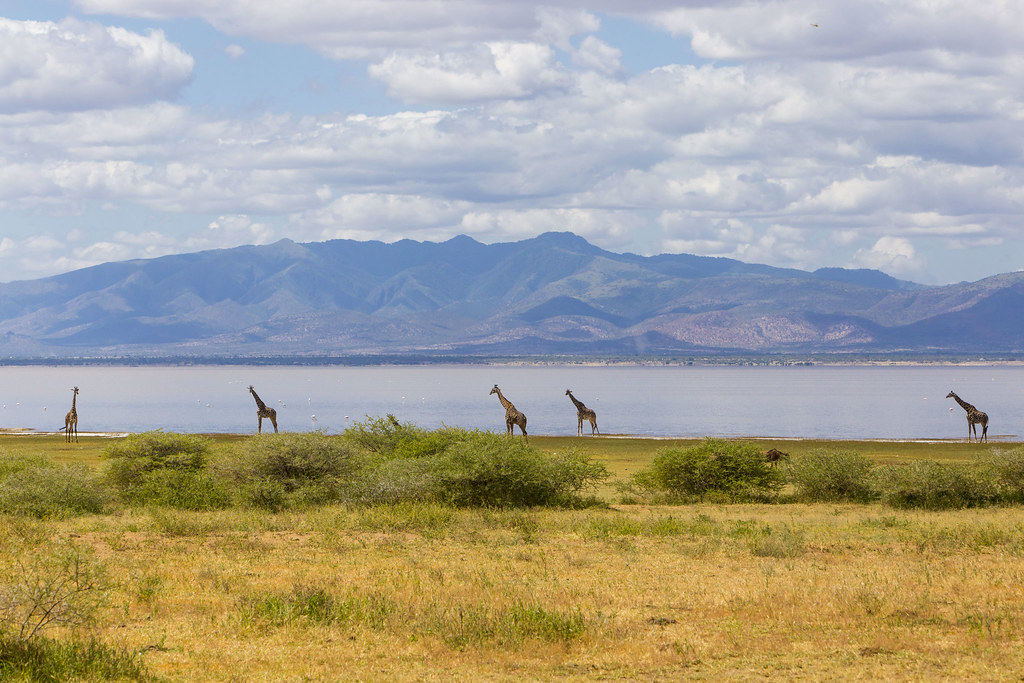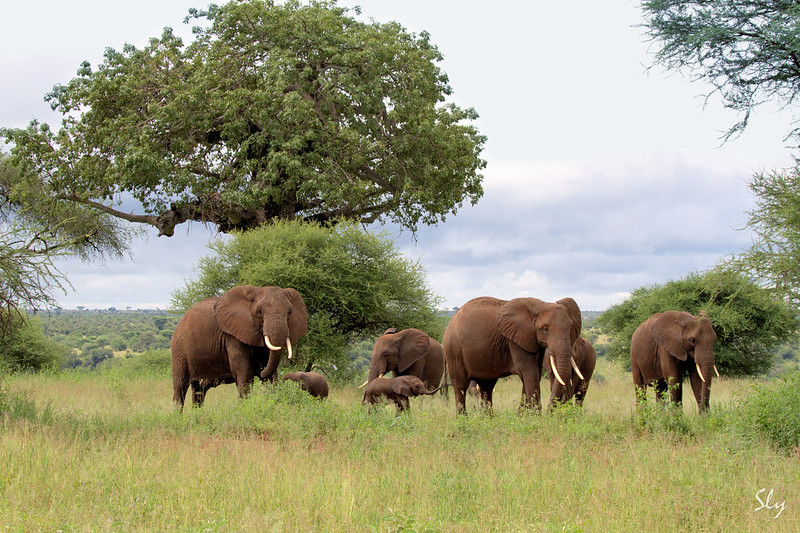Facts About Lake Manyara National Park
Facts About Lake Manyara National Park: Lake Manyara National Park is one of the smallest national parks situated in northern Tanzania, near the base of the Great Rift Valley. The national park was initially designated as a game reserve in 1957 and subsequently proclaimed as a national park in 1960. Lake Manyara National Park encompasses an area of 330 square kilometers, with two-thirds occupied by Lake Manyara. The park features diverse vegetation types, including groundwater forests, acacia woodlands, swampy marshes, and open grasslands, which serve as habitats for various wildlife, such as giraffes, zebras, elephants, buffaloes, leopards, primates like baboons, and numerous bird species. The park is renowned for hosting tree-climbing lions that can be observed lounging in the branches of acacia trees. Lake Manyara National Park is named from the Maasai term “Manyara,” referring to the Euphorbia Tirucalli shrub, which the Maasai utilize as a fencing substitute to safeguard their livestock from thieves, poachers, and predators.
Attractions in Lake Manyara National Park (Information Regarding Lake Manyara National Park)
The national park hosts a diverse array of wildlife, including tree-climbing lions, elephants, wildebeests, zebras, impalas, warthogs, waterbucks, leopards, hippos, buffaloes, giraffes, spotted hyenas, cheetahs, and primates such as baboons and blue monkeys.
Lake Manyara National Park is a premier avian destination in Tanzania, hosting over 400 bird species, including aquatic, migratory, endemic, and near-endemic species found in surrounding countries. Bird species to be observed include silvery-cheeked hornbills, crested guinea fowl, crowned eagles, palm-nut vultures, marabou storks, grey herons, and yellow-billed storks, among others.
Facts About Lake Manyara National Park, Lake Manyara is a shallow alkaline lake with an average depth of 10 feet, encompassing two-thirds of the park. The lake was created by the Great Rift Valley many years ago and serves as an excellent location for birding safaris, where one can observe several species of aquatic birds, hippos in the water, and other animals that come to drink along the shoreline.

Things to do at Lake Manyara National Park
A game drive
A game drive is a popular activity in Lake Manyara National Park conducted in a 4WD safari vehicle. Game drives in the park are most effective early in the morning to observe predators before they retreat to their concealment or in the afternoon across the grassland and forest plains. Throughout the game drive, you will traverse various paths that provide breathtaking vistas of wildlife, including tree-climbing lions, elephants, giraffes, zebras, wildebeests, impalas, leopards, gazelles, waterbucks, bushbucks, lions, diverse bird species, and an array of vegetation, as well as views of the sunrise and sunset.
Canoeing in Lake Manyara
Canoeing is an exhilarating sport in the park where participants paddle along the lake with a knowledgeable guide. Canoeing on Lake Manyara lasts approximately 2 to 3 hours and can be undertaken either in the morning or afternoon. During this activity, participants will paddle near wildlife such as hippos, observe elephants, buffaloes, waterbucks, giraffes, and warthogs drinking along the shores, and encounter various water birds, including pink flamingos, while enjoying picturesque views of the landscape, sunrise, or sunset.

Night game drives
Night game drives at Lake Manyara National Park, one of Tanzania’s protected regions, provide an opportunity to observe nocturnal creatures that become active after dark. The activity commences post-dinner, approximately at 7:30 PM or 8:00 PM, accompanied by an armed park ranger and spotlight torches to facilitate the observation of nocturnal fauna such as lions, leopards, civet cats, genets, porcupines, white-tailed mongooses, wild cats, spotted hyenas, and black-backed jackals, among others. Participants may also witness hippos grazing and various animals at rest, while enjoying the celestial views.
Bird Watching
The national park has about 400 bird species, including migratory, endemic, near-endemic, aquatic species, and more than 50 raptors, establishing it as a paradise for birdwatchers. Birdwatching in Lake Manyara National Park is conducted with an expert park guide in numerous locations, including the groundwater forest, the floodplains of Lake Manyara, acacia woodlands, and around the lake’s perimeter. Birdwatchers will have the opportunity to observe species such as black herons, African fish eagles, greater flamingos, little stints, pied kingfishers, pink-backed pelicans, silvery-cheeked hornbills, yellow-billed storks, grey-crowned cranes, crowned eagles, Abdim’s storks, African spoonbills, sacred ibises, and spur-winged geese, among others.
Nature Walks
Lake Manyara National Park provides guided nature walks, an exciting activity in which guests explore the park on foot along several paths, accompanied by an armed park guide. During the nature walk, you will encounter various animals, including giraffes, elephants, buffaloes, and waterbucks, in their natural habitats. You can relax and appreciate the tranquil environment, observe vibrant butterflies and insects, witness the sunrise, listen to birds singing in the trees, and view diverse plant and tree species.
Cycling
Mountain riding is an exceptional activity that allows you to traverse the park on a bicycle, accompanied by a knowledgeable guide familiar with the paths and diverse fauna. While mountain biking, you will traverse the park, offering splendid vistas of flora and fauna, including many plant and tree species, animals, and birds. You will also pass through the community of Mto wa Mbu, agricultural lands, educational institutions, and health facilities, engaging with the local populace, among other experiences.
Cultural Tour
Cultural tours are an engaging experience in which tourists explore the local communities surrounding the park. On the cultural tour, you will visit Karatu village, where you can engage with the local populace, learn about their lifestyle, culture, history, attire, explore their agricultural lands and educational institutions, sample traditional cuisine, hear ancient narratives, and appreciate their traditional dances and music, among other activities.
Accommodation at Lake Manyara National Park
A diverse array of accommodation options is available for your safari in Lake Manyara National Park, including luxury, midrange, budget, and campsite facilities. Notable establishments comprise Lake Manyara Serena Safari Lodge, African Sunrise Lodge, Karatu Safari Camp, Escarpment Luxury Lodge, Lake Manyara Kilimamoja Lodge, Acacia Farm Lodge, AndBeyond Lake Manyara Tree Lodge, Manyara Wildlife Safari Camp, Kirurumu Manyara Lodge, Octagon Lodge, Burudika Manyara Lodge, Twiga Camp, and Lake Manyara Wildlife Lodge, among others.
When is the best time to Visit Lake Manyara National Park
Lake Manyara National Park is accessible year-round, although the optimal period for visitation is during the dry season from June to October. During this time, reduced rainfall results in diminished vegetation, facilitating clear visibility of numerous animals grazing in the open woodland plains.
The national park is accessible throughout the wet season, specifically from March to May and November, which is optimal for avian observation, allowing bird enthusiasts to observe migratory species.
